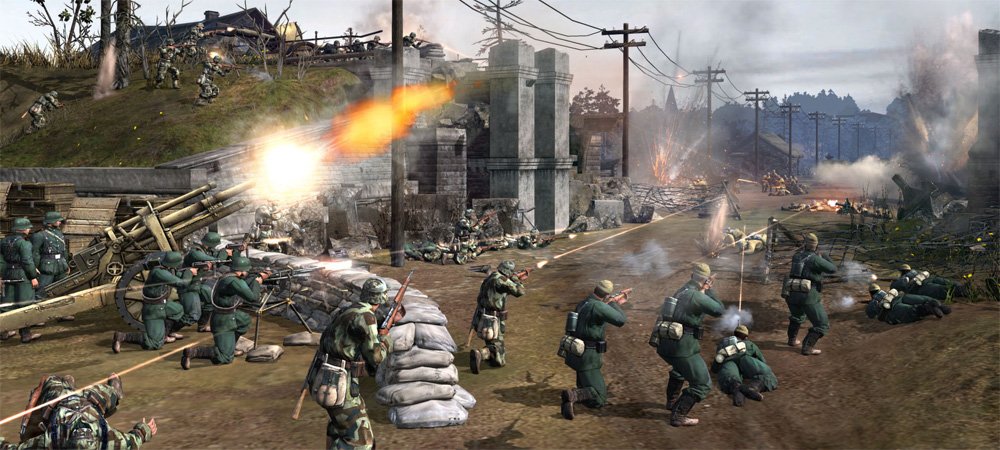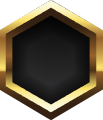Winter is here
Company of Heroes 2 comes off strong with its new campaign, and it packs an impressive amount of extra features. Standing on its own, it is an impressive real-time strategy game, but there are people who want to know what makes this better than the beloved original Company of Heroes. The simple answer to that question is that it’s more of what they love.
The sequel brings a new campaign, new multiplayer maps and units, new co-op modes, more explosions, more units on the field, and deathly winter combat, all presented with the gameplay that made the first such a hit. It stays true to its roots while bringing in enough new, compelling content to make it worthwhile.

Company of Heroes 2 (PC)
Developer: Relic Entertainment
Publisher: SEGA
Released: June 25, 2013
MSRP: $59.99
Rig: AMD Athlon 7850 2.80 GHz, with 4GB of RAM, GeForce GTX 560 Ti GPU
The sequel to one of the best strategy titles out there, Company of Heroes 2 lives up to its predecessor. The game focuses on the Eastern front of World War II, and during the campaign the player takes on the role of the Russians. It’s a slow-paced RTS, with a big emphasis placed on unit placement and having troops stay behind cover if they want to survive.
Each unit is a squad of troops, rather than just an individual. The strength of the squad is based on how many soldiers are alive. This system lets their be hundreds of soldiers in the game, but the player only has to focus on a dozen squads or so. Squads can be refilled with new men at headquarters, or conscript troops can be assigned to fill in missing ranks. At a given time a player will control anywhere from five to twenty squads, which doesn’t seem like it would be that hard to do, but it can be hectic to keep everyone moving and alive.
The utterly fantastic campaign is among the best I have played in a strategy game. Missions are varied enough that different tactics have to be used to win each one. There are some defense missions that are so hectic I had to constantly readjust my troops to face new attacks coming from all sides. One mission takes place in the snow, and you have to prevent your troops from freezing to death by moving close to fires, or keeping them inside.
Another one of my favorites involved hunting down and destroying a Tiger tank, which I ultimately accomplished by luring it into a series of mines I placed as a trap. There are 14 missions in the campaign, and each one takes between 20-60 minutes to complete depending on the difficulty and how terrible you are at playing.
All of the new mechanics fit well with the Eastern Front setting. Lots of soldiers will die, and CoH2 does a brilliant job of making it expensive to lose troops. Conscript troops can be cheaply deployed quickly, but these soldiers are ill-equipped to survive for long. They are best used to replenish the ranks of more valuable units, and then sent off to the front lines. As units are built they will often shout out, “Need a suicide squad?” Taking over an enemy territory will certainly require you to sacrifice a lot of men, and sometimes you’ll have to do it knowing you won’t be able to replace them easily.

I was always faced with some form of a choice with each unit. “Do I have them run in and face certain death, or do I hold back and wait for a better opportunity?” Better opportunities don’t always come, and sometimes the only way to win the battle is to lose a fight. Wounding a tank is ultimately more valuable than a squad of infantry. The cold weather adds to this dilemma of having to choose to lose expensive units, since having them out too long can cause them to freeze to death. Even if they survive a fight, they can and often will die in the cold soon after. All of these calculated decisions are heavy to deal with, and the game’s atmosphere and mechanics make sending every squad to the front lines a hard choice.
Alongside the campaign, there is the “Theater of War” mode which includes a series of co-op and single-player missions and scenarios. This mode is meant to provide more battles along the Eastern front that don’t tie in directly to the campaign. While right now all of the battles focus on the year 1941, Relic has stated that it plans on adding more content later.
The scenarios are tightly-focused missions revolving around one aspect of the war that year, and they are some of my favorite missions in the game. Company of Heroes 2 shines the brightest for me when I have three squads and keeping them alive is insanely hard. The co-op missions are large-scale battles that pit players against a computer opponent; the rest are simply single-player missions that use the multiplayer maps and have a computer opponent.

There is a competitive multiplayer, of course. It’s what gave the first game such a long life, and it’s just as solid in the sequel. It plays out the same as in the first game, either with players fighting over control points or simply trying to demolish each other. This time around there are all new maps and units, which is enough to make me want to play the same style of game. If you are a classic fan of the series and you’re only interested in the multi-player, it’s hard to say if you’ll find enough here invest in this if you already played the first. It’s more of change than the Call of Duty series has every year, and people still play that like crazy.
No matter what your style of play is, there’s a ridiculous amount of achievement, unlocks, and progression to keep you in the game. There are 366 Steam achievements, which is just absurd, but if you play often it’s nice to know there will always be something you haven’t done yet. Your in-game profile, which is tied directly to Steam, will gain levels and as you level up you’ll be able to customize your army with different units, abilities, and even custom skins.
Company of Heroes 2 brings the classic gameplay of the original game into the modern era. It has all of the familiar mechanics while embracing new technology to make everything look and respond better. The physics are very realistic, and just about everything can be destroyed. One mission had me defending a point from oncoming Germans, and I kept getting flanked by them crossing a bridge. On my third attempt I had the crazy idea, “What if I blew up the bridge?” and I sent over a team of engineers to rig it with explosives. The first round of Nazis was met with a surprise, and the bridge was no longer a problem.
All of the cover can be destroyed if the other guy has a big enough gun. Hiding behind a fence might be great for stopping bullets, but tank is going to destroy the wall and everyone behind it. Standing on ice is a really bad idea, since if enough weight is applied, it will break. As things get destroyed, soldiers can take cover in holes in the ground or behind rubble, broken tanks, and even corpses. After a long match the middle ground will often be demolished, filled with the effects of war. This evolving battlefield makes Company of Heroes 2 stand out from other strategy games, and I have a feeling it will make any other game without this level of physics feel fake.

Company of Heroes 2 is an excellent real-time strategy game. The campaign is challenging, varied, and true to the setting of the war. The atmosphere is intense and filled with bass-rumbling sounds, and an orchestral score that provides the perfect background. It’s visually impressive, yet manages to run at a smooth frame rate. All of the matchmaking and multiplayer systems are tied into Steam, so you don’t have to log in twice to play the game; everything runs flawlessly.
I was worried that the campaign would be weak and everything would be focused on the multiplayer, but I was happy to be proven wrong. The campaign turned out to be my favorite part, and with the added content from the Theater of War mode, there is a lot of game even if you don’t want to engage other players. The amount of content is generous, going way beyond the normal six-hour single-player campaign and multiplayer formula that most games use today.
I could ramble off dozens of words of praise, but the simplest way to summarize my experience is to say that I stayed up playing until 4:00am without realizing how late it was, either because I was yelling at the Germans for killing my troops or high-fiving the air when I took out a tank. It’s one of those games that can suck you in for hours and keep you constantly engaged. Company of Heroes 2 is shining example of what an RTS game should be: a mix of classic mechanics with new features and technology.



